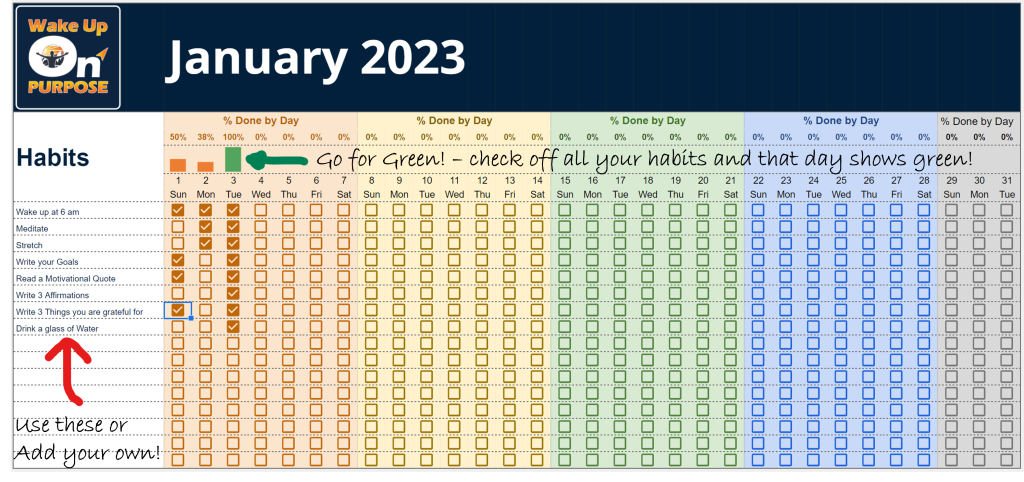In today’s fast-paced world, productivity is the name of the game. We all want to accomplish more in less time while feeling in control of our tasks and achieving our goals. If you’ve ever found yourself overwhelmed, unsure where to start, or constantly distracted, you’re not alone. But fear not, there’s a solution – ‘The Focus Five’ method. This powerful productivity technique will help you gain clarity, boost your confidence, and achieve your goals faster than you ever thought possible. In this article, we’ll explore how ‘The Focus Five’ method can transform your productivity and provide you with actionable steps to create your daily and weekly Focus 5 lists.
Part 1: Understanding ‘The Focus Five’
‘The Focus Five’ is a productivity method designed to help you identify and prioritize your most critical tasks for the day and week. It’s about focusing your energy on what truly matters, eliminating distractions, and making measurable progress toward your goals.
Gary Keller’s Focusing Question is a powerful tool designed to help individuals clarify their priorities and take focused action in various areas of life. By asking this question in different life domains, you can create a list of tasks and to-dos that align with your goals and values. Once you have these lists, you can then organize them using the Eisenhower Matrix and select your Focus 5—the five most important tasks for the day. Let’s explore how to apply the Focusing Question in different areas of life to build your Focus 5 and boost productivity and effectiveness.
Explanation for Each Area:
- At Work:
- Focusing Question: “What one thing can I do at work today such that by doing it, everything else becomes easier or unnecessary?”
- Example Tasks: Prepare for the important presentation, address critical client issues, delegate non-essential tasks.
- At Home:
- Focusing Question: “What one thing can I do at home today such that by doing it, everything else becomes easier or unnecessary?”
- Example Tasks: Tackle home maintenance projects, organize cluttered spaces, plan family activities.
- In My Marriage:
- Focusing Question: “What one thing can I do in my marriage today such that by doing it, everything else becomes easier or unnecessary?”
- Example Tasks: Plan a special date night, have an open and honest conversation with your spouse, express appreciation.
- With my Significant Other (or to find a Significant Other):
- Focusing Question: “What one thing can I do to nurture my relationship (or find a significant other) today such that by doing it, everything else becomes easier or unnecessary?”
- Example Tasks: Join a social club, communicate your relationship goals, invest time in self-improvement.
- With my Friends:
- Focusing Question: “What one thing can I do with my friends today such that by doing it, everything else becomes easier or unnecessary?”
- Example Tasks: Plan a get-together, reach out to a friend in need, strengthen a valuable friendship.
- With my Finances:
- Focusing Question: “What one thing can I do with my finances today such that by doing it, everything else becomes easier or unnecessary?”
- Example Tasks: Create a budget, review and adjust investments, pay off high-interest debts.
- With my Health (Including What I’m Eating):
- Focusing Question: “What one thing can I do for my health today such that by doing it, everything else becomes easier or unnecessary?”
- Example Tasks: Exercise, meal prep healthy food, schedule a doctor’s appointment.
- With my Family:
- Focusing Question: “What one thing can I do with my family today such that by doing it, everything else becomes easier or unnecessary?”
- Example Tasks: Plan a family outing, schedule quality time with each family member, address family issues.
- With my Kids:
- Focusing Question: “What one thing can I do with my kids today such that by doing it, everything else becomes easier or unnecessary?”
- Example Tasks: Help with homework, engage in educational activities, have heart-to-heart conversations.
- In my Connection to Spirit, God, or Religion:
- Focusing Question: “What one thing can I do for my spiritual connection today such that by doing it, everything else becomes easier or unnecessary?”
- Example Tasks: Meditate, read sacred texts, participate in religious or spiritual rituals.
- For Myself to Become Better:
- Focusing Question: “What one thing can I do for self-improvement today such that by doing it, everything else becomes easier or unnecessary?”
- Example Tasks: Take an online course, practice a new skill, read personal development books.
By applying the Focusing Question in these areas of life, you can identify key tasks that will have the most significant impact on your well-being, relationships, and overall success. Once you’ve compiled your task lists, you can then prioritize them using the Eisenhower Matrix and select your daily Focus 5, bringing greater clarity and focus to your daily activities.
Using the Eisenhower Matrix
The Eisenhower Matrix, also known as the Eisenhower Box, is a time management and productivity tool that helps individuals prioritize tasks based on their urgency and importance. It was named after Dwight D. Eisenhower, the 34th President of the United States, who was known for his ability to make effective decisions and manage his time wisely.
The matrix consists of four quadrants, each representing a different category for tasks:
- Urgent and Important (Do First): Tasks in this quadrant are both urgent and important. They require immediate attention and should be addressed as a top priority. These are typically critical tasks that directly contribute to your long-term goals or have consequences if not completed promptly.
- Important, but Not Urgent (Schedule): Tasks in this quadrant are important for your long-term goals but are not time-sensitive. You should schedule these tasks for a specific time slot in your day or week to ensure they receive the attention they deserve. This quadrant is often where planning, strategic thinking, and personal development activities belong.
- Urgent, but Not Important (Delegate): Tasks in this quadrant are urgent but do not contribute significantly to your long-term goals. Consider delegating these tasks to others if possible. They may be necessary for daily operations but don’t require your personal attention.
- Not Urgent and Not Important (Eliminate): Tasks in this quadrant are neither urgent nor important. They are distractions that can consume your time and energy. It’s best to eliminate or minimize these tasks to free up time for more valuable activities.
To use the Eisenhower Matrix effectively:
- List Your Tasks: Start by listing all the tasks and activities you need to complete, whether they are work-related or personal.
- Categorize Tasks: Place each task in one of the four quadrants based on its urgency and importance. Be honest and objective when assessing tasks.
- Prioritize: Begin with tasks in the “Urgent and Important” quadrant (Do First). These are your top priorities. Next, schedule tasks in the “Important, but Not Urgent” quadrant (Schedule). Delegate tasks in the “Urgent, but Not Important” quadrant (Delegate) if possible. Finally, eliminate or minimize tasks in the “Not Urgent and Not Important” quadrant (Eliminate).
- Take Action: Start working on the tasks in each quadrant according to their priority. Focus on completing the most critical tasks first.
- Review Regularly: Regularly review and update your Eisenhower Matrix as new tasks arise and priorities shift. This helps you maintain a clear understanding of where to invest your time and energy.
The Eisenhower Matrix is a valuable tool for achieving better time management and productivity by helping you distinguish between tasks that matter most and those that can wait or should be avoided altogether. It encourages a proactive and strategic approach to task management.
Part 2: Benefits of ‘The Focus Five’
Top 5 Benefits of ‘The Focus Five’ method:
- Clarity: By identifying your top priorities, you’ll gain clarity on what needs to be done, reducing mental clutter and indecision.
- Confidence: Knowing you’re working on the most critical tasks boosts your confidence and empowers you to take action.
- Efficiency: Focusing on a shortlist of tasks prevents multitasking and ensures that you complete important work efficiently.
- Goal Achievement: ‘The Focus Five’ helps you make consistent progress toward your goals, ensuring that you stay on track and achieve what truly matters.
- Work-Life Balance: By prioritizing your tasks, you’ll find it easier to strike a balance between work and personal life, reducing stress and burnout.
Part 3: Creating Your Focus 5 Lists
Creating a Focus 5 using Gary Keller’s Focusing Question and the Eisenhower Matrix is a strategic approach to prioritize your daily tasks for maximum productivity and effectiveness. Here’s a step-by-step guide on how to do it:
Step 1: List Your Tasks
- Start by listing all the tasks, to-dos, and projects you need to complete for the day. This list can come from various areas of your life, such as work, personal goals, family, health, or any other responsibilities.
Step 2: Apply the Focusing Question
- For each task on your list, ask yourself Gary Keller’s Focusing Question: “What one thing can I do such that by doing it, everything else becomes easier or unnecessary?” This question helps you identify the most impactful task in each area.
Step 3: Categorize with the Eisenhower Matrix
- Now, categorize each task using the Eisenhower Matrix, which divides tasks into four quadrants based on urgency and importance:
- Quadrant 1 (Urgent and Important): Tasks that need immediate attention and have a significant impact. These are your top priorities.
- Quadrant 2 (Not Urgent but Important): Tasks that are important for your long-term goals but may not be urgent. These are tasks you want to schedule for later.
- Quadrant 3 (Urgent but Not Important): Tasks that are urgent but don’t contribute significantly to your goals. These are often distractions that should be minimized.
- Quadrant 4 (Not Urgent and Not Important): Tasks that are neither urgent nor important. These are typically time-wasters and should be avoided.
Step 4: Identify Your Focus 5
- Focus on Quadrant 1 tasks, as these are your top priorities. Among your Quadrant 1 tasks, select the five most critical tasks that align with the Focusing Question’s guidance to make everything else easier or unnecessary.
Step 5: Create Your Focus 5 List
- Write down your selected five tasks, creating your Focus 5 list for the day. These tasks should be the ones that, when completed, will have the most significant positive impact on your goals and responsibilities.
Step 6: Sequence Your Focus 5
- Arrange your Focus 5 in the order you plan to tackle them. Consider your energy levels throughout the day and schedule your most important and challenging tasks when you’re at your peak.
Step 7: Start with Your Focus 1 Task
- Begin your day by focusing on your first task from the Focus 5 list. Give it your full attention and work on it until it’s completed or until you’ve made substantial progress.
Step 8: Progress to the Next Task
- Once you’ve finished your Focus 1 task, move on to your Focus 2 task, and so on. Stay committed to completing your Focus 5 tasks before addressing other less important items on your to-do list.
Step 9: Adapt as Needed
- Throughout the day, remain flexible. If new urgent and important tasks arise, assess whether they should replace one of your Focus 5 tasks or be scheduled for another time.
Creating a Focus 5 list using this method ensures that you tackle your most critical tasks first, aligning your actions with your long-term goals and significantly boosting your productivity and effectiveness. This approach helps you avoid the feeling of being overwhelmed by tasks and instead empowers you to make steady progress toward your objectives.
Example 4: Weekly Focus 5
- Prepare for the client presentation (Quadrant 1).
- Review the project timeline for potential bottlenecks (Quadrant 1).
- Complete the financial report (Quadrant 1).
- Schedule a team meeting to address project updates (Quadrant 2).
- Revise the marketing strategy for the upcoming campaign (Quadrant 2).
Example 5: Daily Focus 5
- Prepare the outline for the client presentation (Ivy Lee Method).
- Review the financial report (Ivy Lee Method).
- Attend the team meeting (Ivy Lee Method).
- Revise the marketing strategy (Ivy Lee Method).
- Follow up with the client regarding their feedback (Ivy Lee Method).
‘The Focus Five’ method is your ticket to unlocking hyper-productivity and achieving more than you ever thought possible. By prioritizing your tasks, gaining clarity, and maintaining focus, you can take control of your day, reduce overwhelm, and make significant strides toward your goals. Remember, productivity isn’t about working longer hours; it’s about working smarter with ‘The Focus Five.’ Try it out, and watch your productivity soar.





